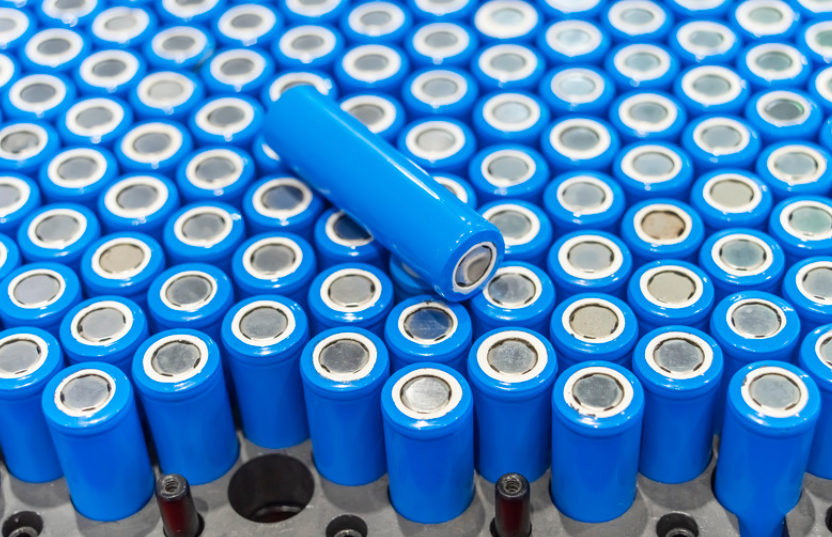Truck Fire Incident Involving Lithium-Ion Batteries: A Comprehensive Overview
On a Saturday afternoon, a significant incident unfolded on Interstate 15 near Baker, California, when a truck carrying a load of lithium-ion batteries caught fire following an accident. This event not only caused considerable traffic disruptions but also raised pressing environmental concerns. Given the volatile nature of lithium-ion batteries, the fire spread rapidly, necessitating an extensive response from local authorities and emergency services.
The Incident: An Overturned Truck
The situation began when the truck overturned on the highway, leading to the ignition of the batteries it was transporting. Firefighters promptly arrived at the scene, engaging in a fierce battle against the flames that prompted major traffic delays in both directions. It took nearly ten hours to bring the fire under control, stranding numerous motorists on this critical corridor connecting the bustling cities of Los Angeles and Las Vegas. The timing of the accident during a busy travel period exacerbated the traffic situation, resulting in substantial inconvenience for travelers who were simply trying to reach their destinations.
The Response: Emergency Services and Hazmat Teams
Emergency responders acted quickly to contain the fire, but the potential hazards associated with lithium-ion batteries complicated their efforts. In addition to firefighters, hazardous materials (hazmat) crews were dispatched to evaluate the chemical risks posed by the blaze. When ignited, lithium-ion cells can emit toxic fumes, which raised concerns about air quality and safety for those in the vicinity. The quick action of the emergency teams was crucial to managing the situation and mitigating potential health risks associated with exposure to toxic substances.
Traffic Impact and Stranded Motorists
The repercussions of this incident extended well beyond the embers of the fire. The highway remained closed for nearly ten hours as emergency services worked to control the situation. This closure led to significant traffic jams, stranding hundreds of motorists who were left with no choice but to wait for the road to be cleared. For many, this unexpected delay resulted in considerable frustration and uncertainty regarding their travel plans, highlighting the broader implications of transportation incidents on everyday life.
Investigating the Cause: Preliminary Findings
In the aftermath of the accident, authorities promptly initiated an investigation to determine the cause of the truck overturning. Initial reports suggest a possible mechanical failure might have played a role, prompting a deeper examination into the condition and safety protocols related to the vehicle involved. Additionally, this incident has brought greater scrutiny to the regulations governing the transport of hazardous materials, particularly lithium-ion batteries, which have been linked to a series of similar incidents across the country in recent years.
Environmental Implications: Assessing the Impact
While there were no injuries reported, the incident raised urgent concerns regarding its environmental impact. One key issue is the potential contamination of nearby soil and water sources due to the chemicals contained within lithium batteries. State officials have begun assessing the extent of this risk, as well as the implications for local ecosystems. Authorities are aware of the importance of monitoring these environmental factors and are committed to addressing any potential consequences from the fire.
Future Regulation and Safety Measures
In light of this recent incident, state officials have committed to reviewing and tightening regulations concerning the transportation of hazardous materials, particularly lithium-ion batteries. The goal is to enhance safety measures and prevent similar occurrences in the future. The aim is to not only protect public safety but also to reduce the environmental risks associated with the transportation of such materials. As the conversation around safer transport of hazardous goods continues, this event may serve as a critical catalyst for reform.
Conclusion
The truck fire incident on Interstate 15 near Baker, California, serves as a reminder of the complexities and dangers associated with transporting lithium-ion batteries. As investigations continue and the environmental impact is assessed, it is clear that both safety and environmental concerns necessitate a reevaluation of existing transportation regulations. With a strong commitment from authorities to enhance these measures, it is hoped that future incidents can be prevented to ensure the safety of both motorists and the environment.
FAQs
What caused the truck carrying lithium-ion batteries to catch fire?
The fire was initiated after the truck overturned, and preliminary investigations suggest a possible mechanical failure may have contributed to the accident.
Were there any injuries reported from the incident?
No injuries were reported as a result of the truck fire incident.
What are the environmental concerns associated with burning lithium-ion batteries?
When ignited, lithium-ion batteries can release toxic fumes that pose health risks and there are concerns about the chemicals contaminating nearby soil and water sources.
What actions are being taken to prevent similar incidents in the future?
State officials are reviewing and tightening regulations surrounding the transportation of hazardous materials like lithium-ion batteries to enhance safety and prevent future accidents.
How long did the traffic delay last as a result of the fire?
The highway was closed for nearly ten hours, causing significant traffic delays and stranding numerous motorists.

